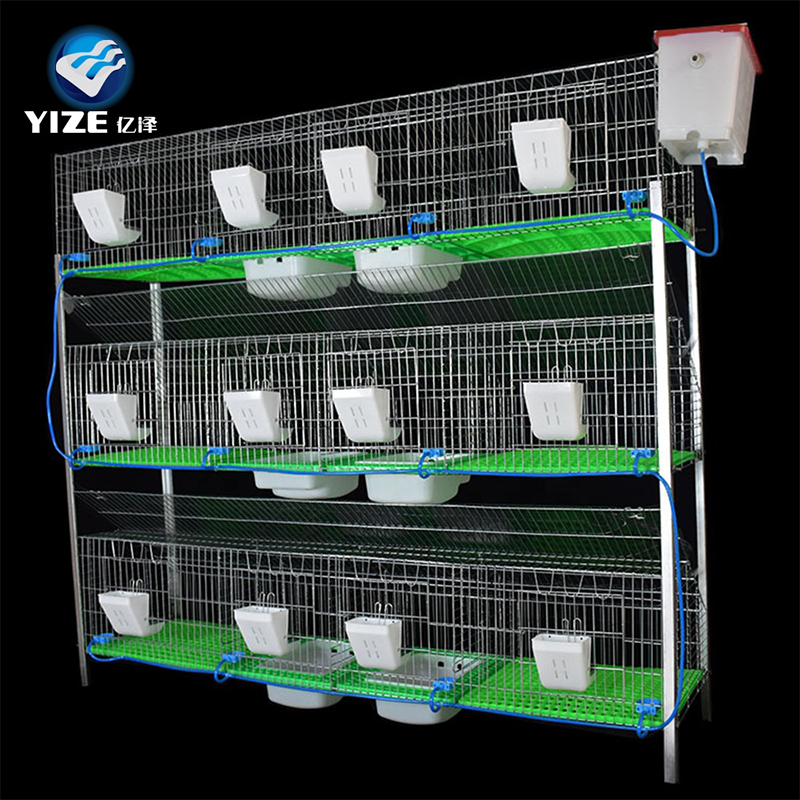mobile commercial poultry housing
Oct . 16, 2024 21:56 Back to list
mobile commercial poultry housing
Mobile Commercial Poultry Housing A Sustainable Solution for Modern Farming
In the evolving landscape of agriculture, mobile commercial poultry housing is emerging as a transformative approach to poultry farming. With a growing emphasis on sustainability, animal welfare, and efficient resource management, mobile housing systems offer significant advantages over traditional static setups. This article explores the benefits, design considerations, and future of mobile poultry housing.
What is Mobile Poultry Housing?
Mobile poultry housing refers to transportable structures designed to house flocks of poultry while allowing for movement across the landscape. Unlike conventional poultry barns that are fixed in one location, mobile units can be relocated to fresh pastures, enabling a more dynamic and sustainable farming approach. This method mimics natural grazing behaviors and allows birds to forage, which is beneficial for their health and well-being.
Advantages of Mobile Poultry Housing
1. Enhanced Animal Welfare One of the primary benefits of mobile poultry housing is the improvement in animal welfare. Birds housed in mobile units have access to fresh air, sunlight, and natural forage, which is essential for their physical and psychological well-being. This approach aligns with consumers' growing demand for ethically raised poultry, thus enhancing the marketability of the products.
2. Environmental Sustainability Mobile poultry housing supports sustainable farming practices. By regularly moving the housing to different areas, farmers can prevent overgrazing and reduce the environmental impact associated with concentrated waste. This rotational grazing technique helps in nutrient recycling, as the droppings from the birds act as natural fertilizers for the soil.
3. Cost-Effective Operations Investing in mobile housing can be cost-effective for poultry farmers. These systems often require less infrastructure compared to traditional barns, resulting in reduced construction costs. Additionally, mobile units can utilize existing land more efficiently, allowing farmers to diversify their operations without significant capital investment.
4. Flexibility and Adaptability The ability to relocate poultry housing provides farmers with flexibility to adapt to changing environmental conditions, market demands, and biosecurity measures. For instance, in times of adverse weather or disease outbreaks, mobile units can be shifted to safer locations with minimal disruption to the flock.
mobile commercial poultry housing

Design Considerations
When implementing mobile poultry housing, several design factors should be considered to maximize its effectiveness
1. Size and Capacity The size of mobile units should accommodate the needs of the flock while adhering to animal welfare standards. It is crucial to ensure adequate space for movement, nesting, and feeding.
2. Durability and Protection Materials used for constructing mobile poultry houses should be durable and weather-resistant. Additionally, adequate ventilation, insulation, and predator protection are essential to maintain a safe and comfortable environment for the birds.
3. Infrastructure for Feeding and Watering An efficient system for feeding and watering the birds is vital. Mobile units can be designed with built-in feeders and waterers or provisions for easy connection to external supply lines.
4. Waste Management Effective waste management practices are necessary to reduce the environmental impact of poultry farming. Mobile housing systems should incorporate features that facilitate the collection and disposal of waste, ensuring that it can be managed responsibly.
The Future of Mobile Poultry Housing
As the demand for sustainable and humane farming practices continues to rise, mobile commercial poultry housing is likely to gain traction in the poultry industry. Innovations in design and technology will further enhance the efficiency and effectiveness of these systems. The development of automated feeding and watering systems, climate control technologies, and smart monitoring solutions will improve the overall management of mobile flocks.
In conclusion, mobile commercial poultry housing represents a significant step towards a more sustainable and ethical approach to poultry farming. By allowing for better animal welfare, reducing environmental impact, and offering operational flexibility, these systems have the potential to revolutionize the poultry industry. As farmers explore new ways to meet consumer demands and navigate the challenges of modern agriculture, mobile poultry housing will undoubtedly play a crucial role in shaping the future of the sector.
-
Automatic Feeding Line System-Pan Feeder Nipple Drinker|Anping County Yize Metal Products Co., Ltd.
NewsJul.29,2025
-
Hot Sale 24 & 18 Door Rabbit Cages - Premium Breeding Solutions
NewsJul.25,2025
-
Automatic Feeding Line System Pan Feeder Nipple Drinker - Anping County Yize Metal Products Co., Ltd.
NewsJul.21,2025
-
Automatic Feeding Line System Pan Feeder Nipple Drinker - Anping County Yize Metal Products Co., Ltd.
NewsJul.21,2025
-
Automatic Feeding Line System - Anping Yize | Precision & Nipple
NewsJul.21,2025
-
Automatic Feeding Line System - Anping Yize | Precision & Nipple
NewsJul.21,2025






